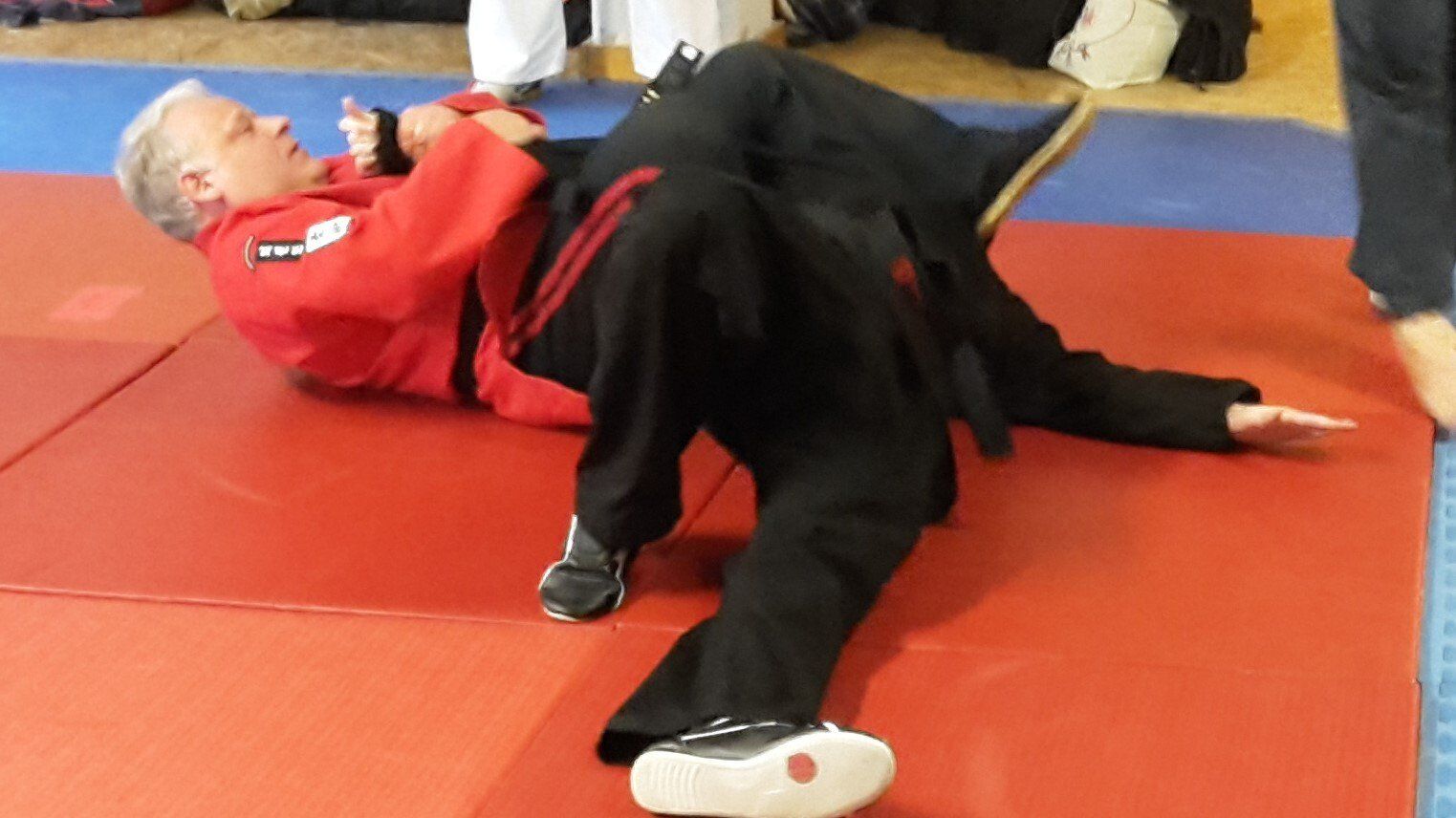Jiu Jitsu is a comprehensive martial art from Japan in which throwing techniques (Nage Waza), grip techniques (Katame Waza) and striking techniques (Atemi) can be used, with different schools (Ryu) and styles (Ryu-ha) in the hundreds of different schools Engineering groups are preferred.
For example, the Tenshin shinyo ryu is known for its striking and fixing techniques, while the throwing techniques are a specialty of the Kito Ryu and the Daito Ryu teaches many articulated lever techniques (Kansetsu Waza).
Jiu Jitsu is unarmed self-defense against various types of attack. The attacks can take place as close or ranged attacks, while standing or on the ground, armed or unarmed. Attacks at close range are e.g. body attacks such as body clasps, strangleholdings, headlocks, hair pulling, etc. Unarmed attacks from distance are e.g. punches and kicks and armed attacks are carried out with a short or long stick, knife, gun or with everyday objects such as a bottle or a belt.
The defense against the various attacks can be done by evading, blocking, punching, kicking, throwing, levering, choking, fixing / suspending and transporting. Depending on the intensity of the attack, they are carried out by observing the right of self-defense, which every dojo teacher must be familiar with.
Through regular practice of this martial art, physical fitness and thus the maintenance of health, a perfecting of character and personality, the necessary self-confidence and spiritual maturity are strived for.
The historical development of Jiu Jitsu:
The origin of Jiu Jitsu is not clear, its roots are likely to be found in India. Based on the Indian art of massage, a specific knowledge of pain-causing grips developed in ancient times. Presumably this knowledge found its way from India to China.
There the techniques were further developed by members of religious circles. Knowledge of these pain-sensitive points was probably introduced to Japan around 1600.
The actual term "Jiu Jitsu" only came into being in the 18th century. Originally, Jiu Jitsu was under various names (Yawara, Aiki [ju] jutsu, Hakuda, Kempo, Kogusoku, Koshi no mawari, Kumi uchi, Tai jitsu, Torite, Shubaku etc.) a component of the training of the various martial arts schools of the Japanese warrior class (Bushi, Samurai ), in addition to the weapon techniques taught in the respective school and was laid down in "Bushido", the so-called code of honor of the samurai. The Meiji period (1868-1912) led to the decline of the samurai. Japan opened up to western influences, partly neglected old customs and paid no attention to the old martial arts for a long time. It was not until the end of the 19th century that it was once again incorporated into Japanese culture as a traditional good, with the martial aspect being replaced by the sporting and intellectual one



